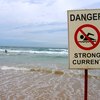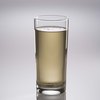Cruise Ship Plumbing
When on a cruise ship you may notice little difference between the ships restroom facilitates and the ones in your own home. The toilet flushes. The sink faucet and shower faucet pours out water that disappears down the drain. But what happens to the waste once flushed down the toilet and the water that disappears down the sink and shower drains? The answer to these questions is the dirty secret that the cruise industry doesn't like to advertise.
Where Cruise Ship Restroom Facility Waste Ends Up
There are two types of sewage on a cruise ship.
1) Gray water, which is water that goes down sink and shower drains.
2) Black water, which is the waste that flushes down the toilet.
Gray water drains to a tank called the gray water tank. Black water drains to a tank called the black water tank. Both tanks are large central tanks hidden from the passengers' view, where all of the restroom facilities drain into.
Gray and black water tanks fill up quickly on a cruise ship. In order to handle the large amounts of waste, the cruise ship must empty the tanks. Ideally, tanks are treated before dumping to minimize contaminants. If treated, both tanks are treated with either chlorine or an environmentally friendly bacteria solution. After treatment, the tanks are emptied into the ocean. There you have it, the cruise ship industries dirty secret. Cruise ships regularly dump human waste into the ocean!
Plumbing Clogs
Just like plumbing in your home, plumbing on cruise ships can get clogged. If waste gets stuck in the pipes before it reaches the gray or black water tank, it can cause a blockage. If a blockage occurs, a plumber must be called to clear the blockage. In 2006, passengers aboard the Thomson's Destiny cruise ship were stuck without working toilets for three days due to blockages in the plumbing.
Environmental Concerns
According to Oceana (an organization whose mission is to protect the world's oceans}, the cruise ship industry dumps 255,000 gallons of gray water and 30,000 gallons of black water into the ocean everyday. The United States allows cruise ships to dump untreated sewage into the water as long as the ship is three miles away from shore. If the cruise ship treats the sewage, the three mile restriction does not count and the sewage can be dumped anywhere. Alaska is the only place in the United States waters that does not allow dumping. Even sewage and gray water treated with chlorine or environmentally friendly bacteria is often highly contaminated. It is hard to effectively treat such large amounts of sewage and wastewater in a short time. Bacteria solutions are made up of bacteria that are designed to destroy harmful bacteria. The process is lengthy and can not be done in a short period of time. In addition, chlorine is harmful to aquatic life.
Oceana is urging the Environmental Protection Agency to set and enforce better regulations to stop cruise ship pollution in the oceans.




